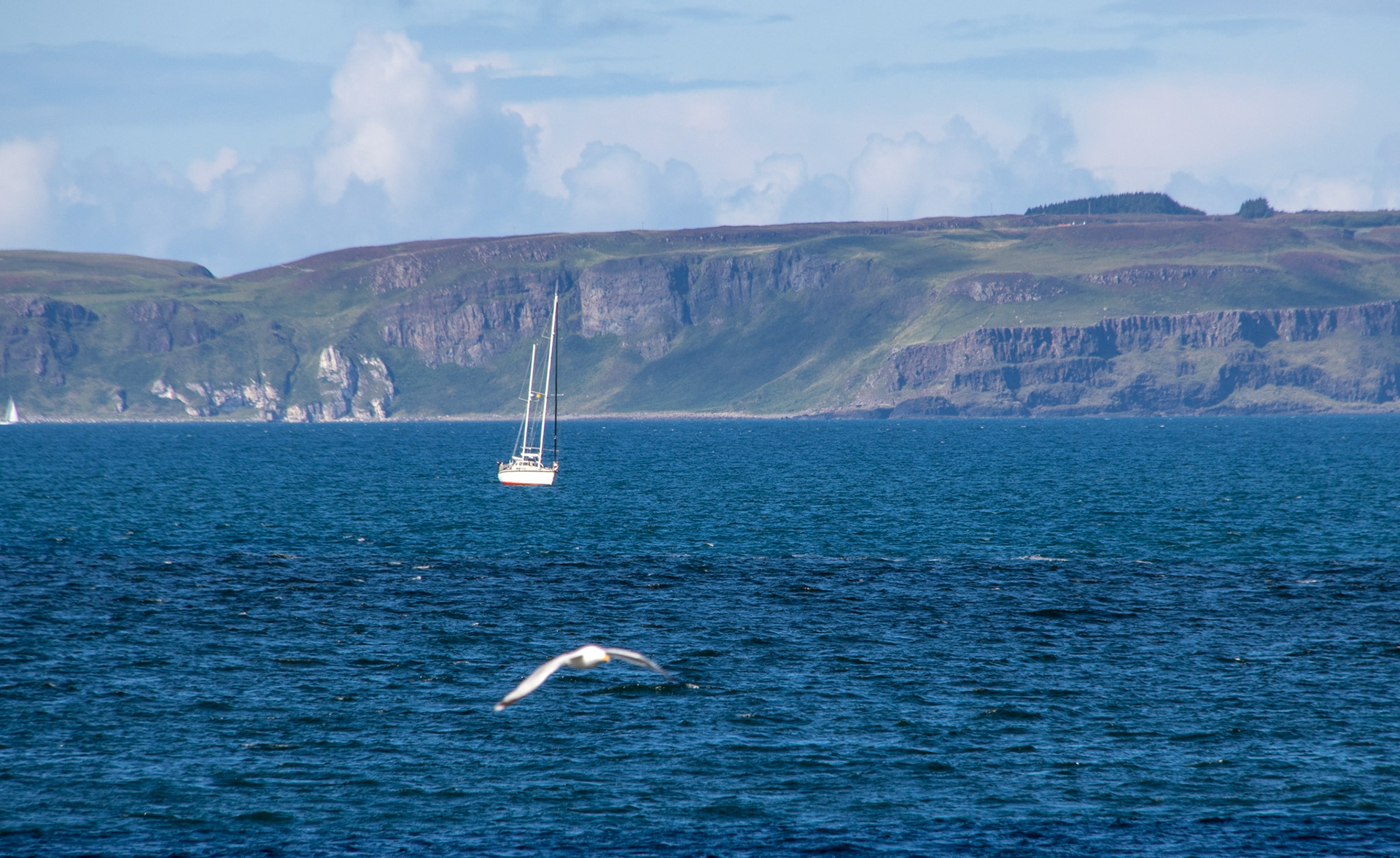21 June 2023
We reluctantly left this beautiful area and sailed from Barra to the Isle of Muck. Leaving at 0900 we crossed the peaceful Minch, often motor sailing as the wind was from the South west and wasn’t quite strong enough for us to hold the main and full headsail but too strong to fly the parasail or our “pretty” red one. Crossing in sunshine we saw passing dolphins and kept a sharp lookout for the whales but didn’t see them on this trip. We made Gallanach Bay on the Isle of Muck at around 1900 and were pleased to find there was space for us to anchor up near the head of the bay in beautifully clear water. The white sands of the bay and the clear blue skies and a rum and ginger up top gave us a feeling of supreme well being and we thought the Scottish summer would last for a while.
The isle of Muck is the smallest of the Small Isles at only 1381 acres and is the most fertile with the soils made up of glacial drift and sea blown shell-sand. (regularly replaced with the unrelenting Atlantic gales to which this small island is exposed.) There is a mixed farm, of cattle sheep and a small dairy herd with some oats, potatoes and root crops grown. With the vegetable patch, available for all islanders to use, the island is self-sufficient in milk, eggs and vegetables. The power for the island comes from 2 wind powered generators and on busy days such as sheep shearing the whole community comes together to help, including the children.
It has the same gruesome history that so many of the islands do with various overbearing and profit driven landowners and lairds stripping the natural resources and shipping islanders off to Nova Scotia and other far flung lands. However the current owners have a very different approach, are community driven and encourage families with young children to join their small community and they keep a vibrant primary school open for the youngsters. There is a small ferry port on the south east side of the island served by Calmac from Mallaig which ferries tourists and residents to and from the Island. There is a licensed café serving just the very best sausage rolls ever (Nicks recommendation) and various other delicious home baked meals and goodies.

Whimbrel far left
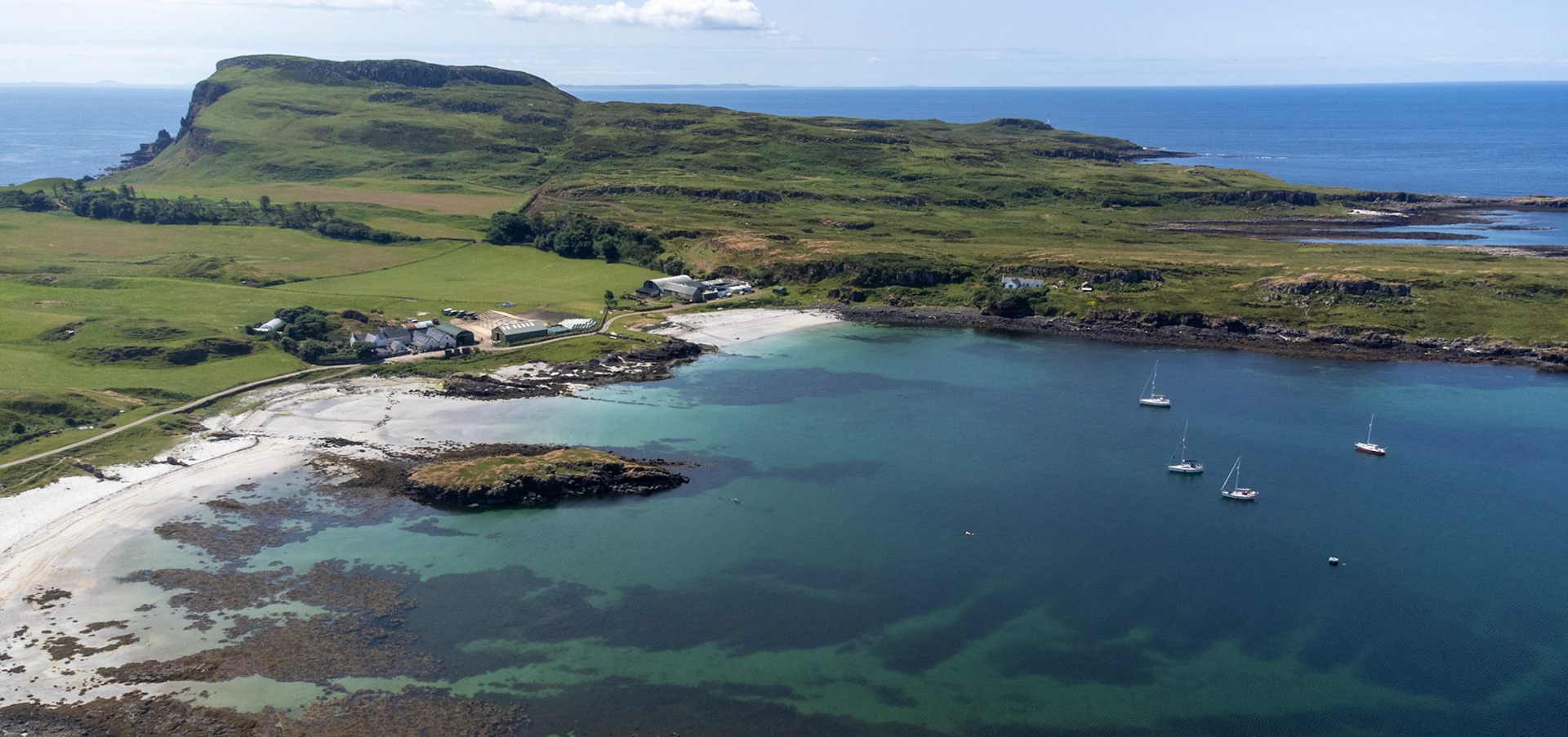

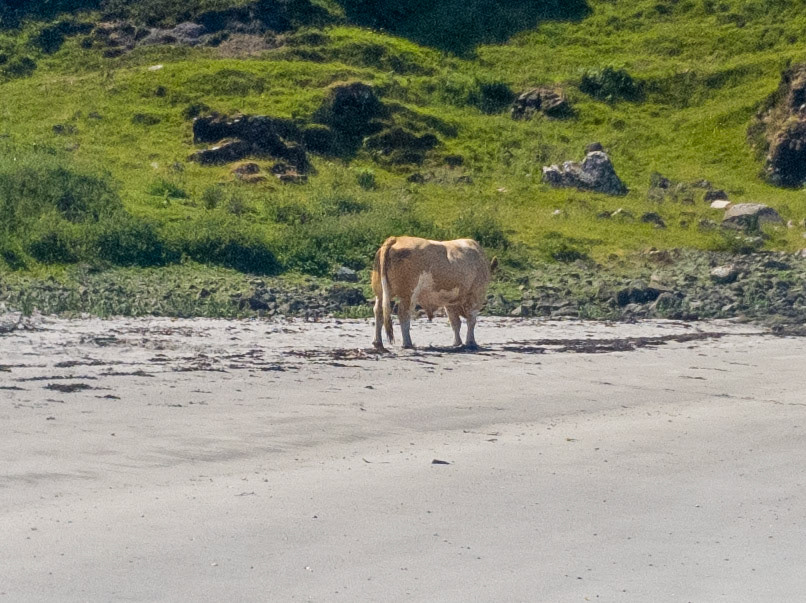
Simmental the Bull
After just a day on Muck we motored in calm seas across to Arisaig as a rather violent storm was due in on 24 June and we felt the need for shelter. Just as well, it was a bit of a corker and even on the mooring buoys we bounced and heeled until the wind eventually blew itself out by 26 June.
We left Arisaig with a South westerly heading in…. a south westerly direction…. Hence the tacking games in the sound, for Tobermory as we planned all the options to try to get to Coll and Tiree and even around the West Coast of Mull. Again we were a bit stymied by the strong wind forecasts and directions for any of the lovely anchoring spots we had picked out. So we arrived on our buoy in Tobermory and were told it was the round the Mull race over the weekend with the first boats arriving Friday evening. As the winds built to over 44kts around the west coast they cancelled the full race and instead set a course up and down the Mull in gentle 30 kt winds. The running starts were amazing to watch. Later we took a lovely long walk out to the west coast of Mull and were so lucky to see a full herd of red deer hiding in a forest glen and as we enjoyed our picnic on the beach watched a sea eagle fly just 50 ft above our heads….such amazing and huge birds when seen up close.
The winds calmed a little and by Monday we decided on a sail up the beautiful Loch Sunart to Salen. We flew the whole way with just our red light genoa and really enjoyed the peace and beauty of this loch.
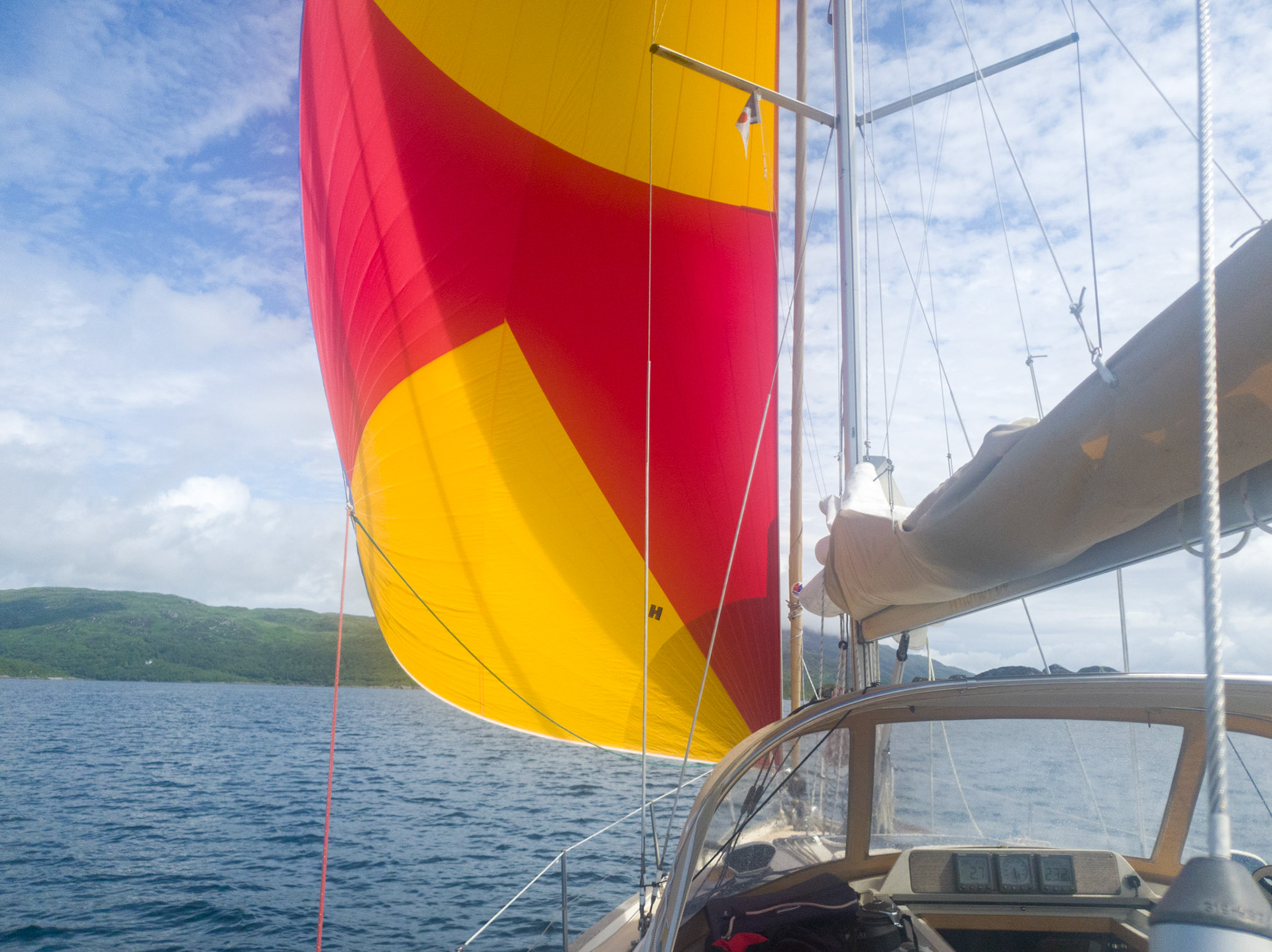

Arisaig on a dull day
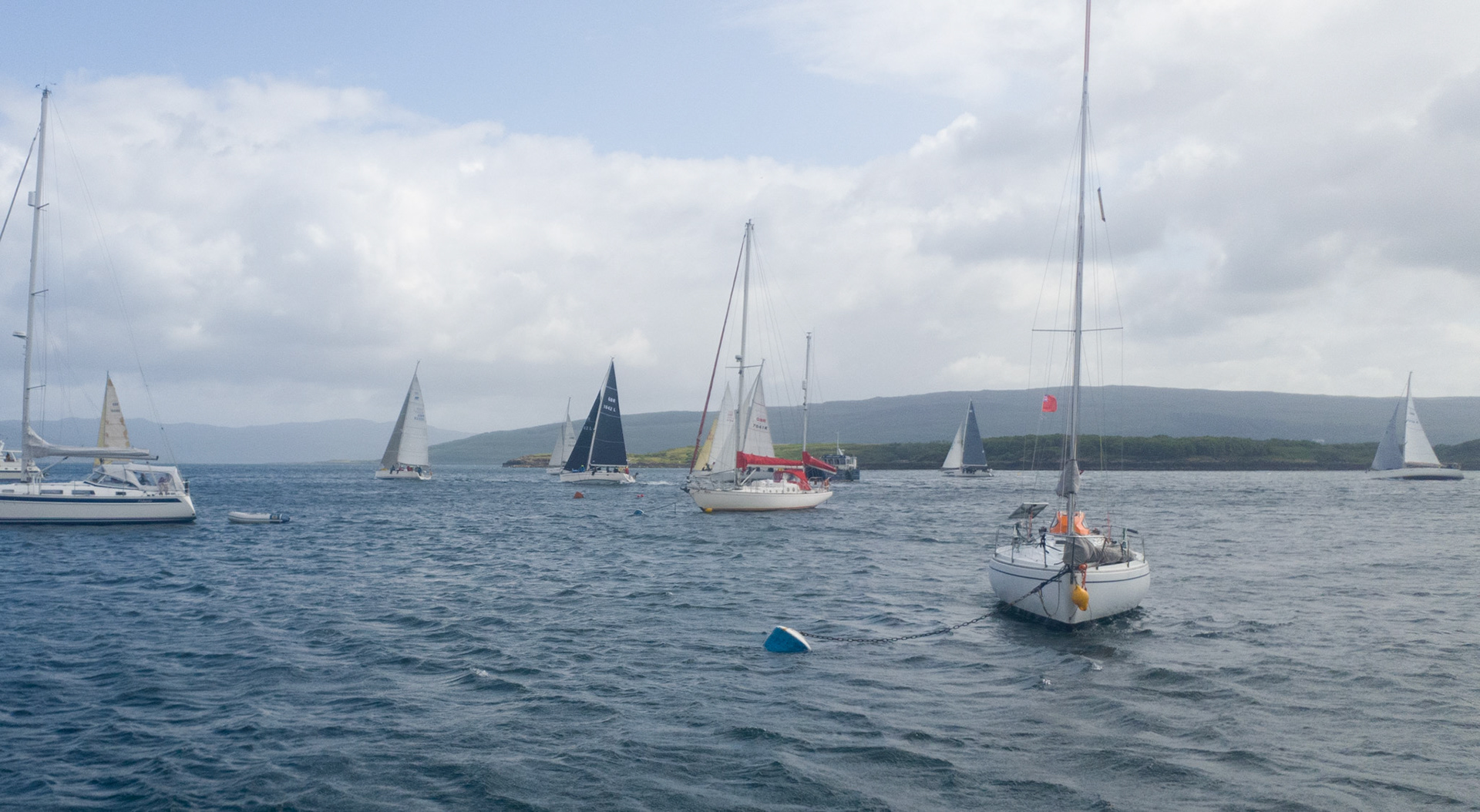
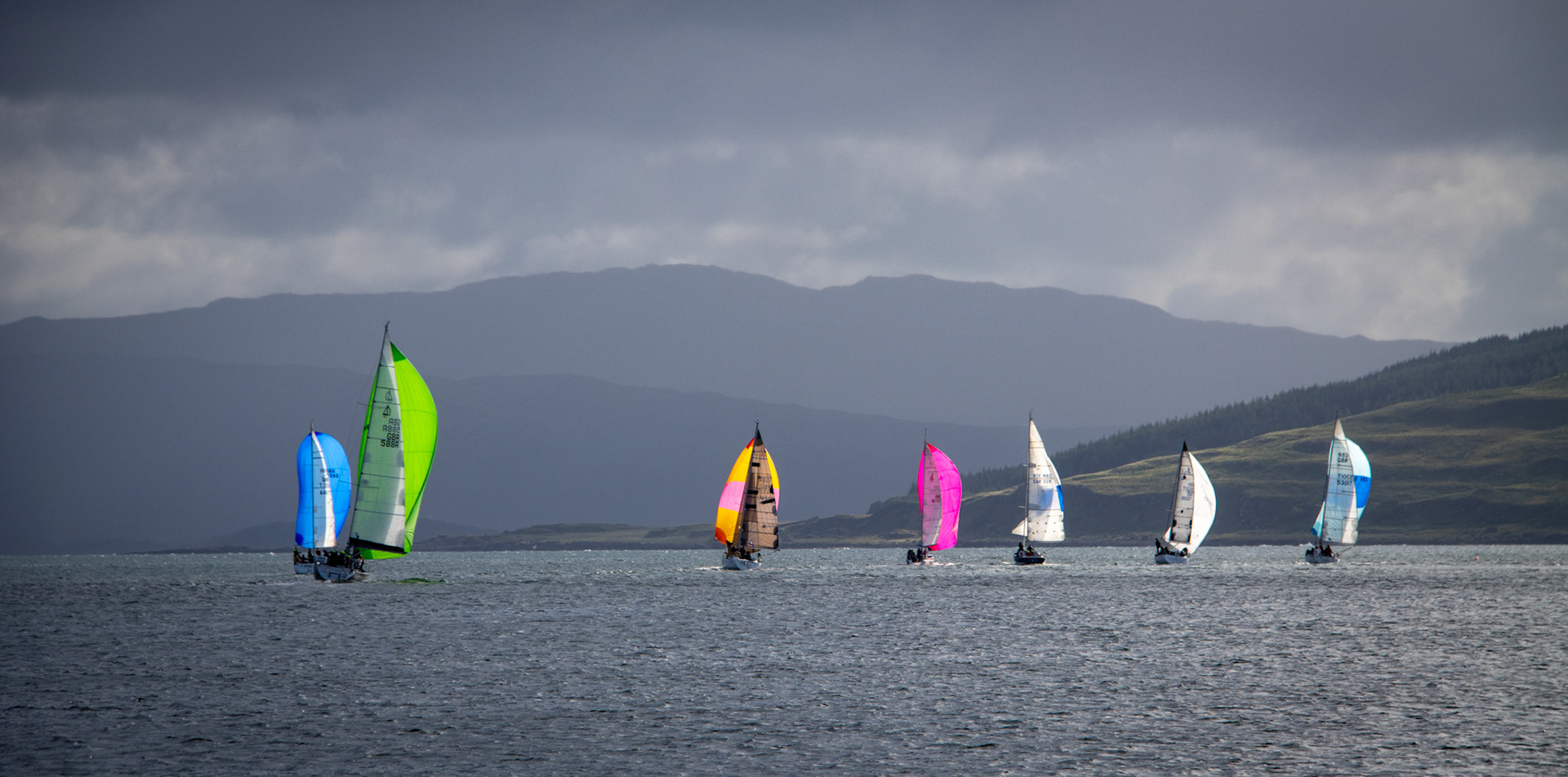
Tobermory
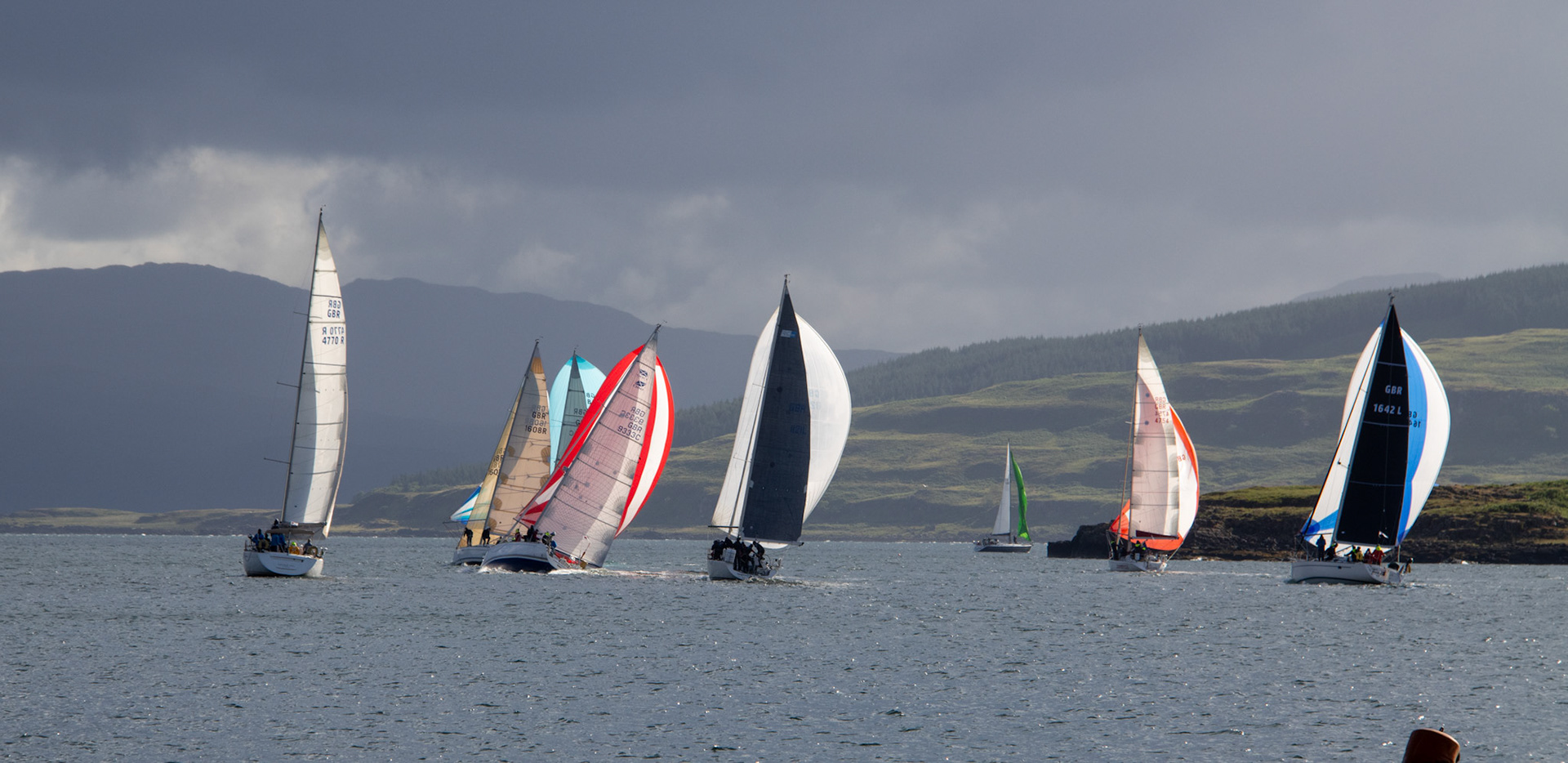
A running Start
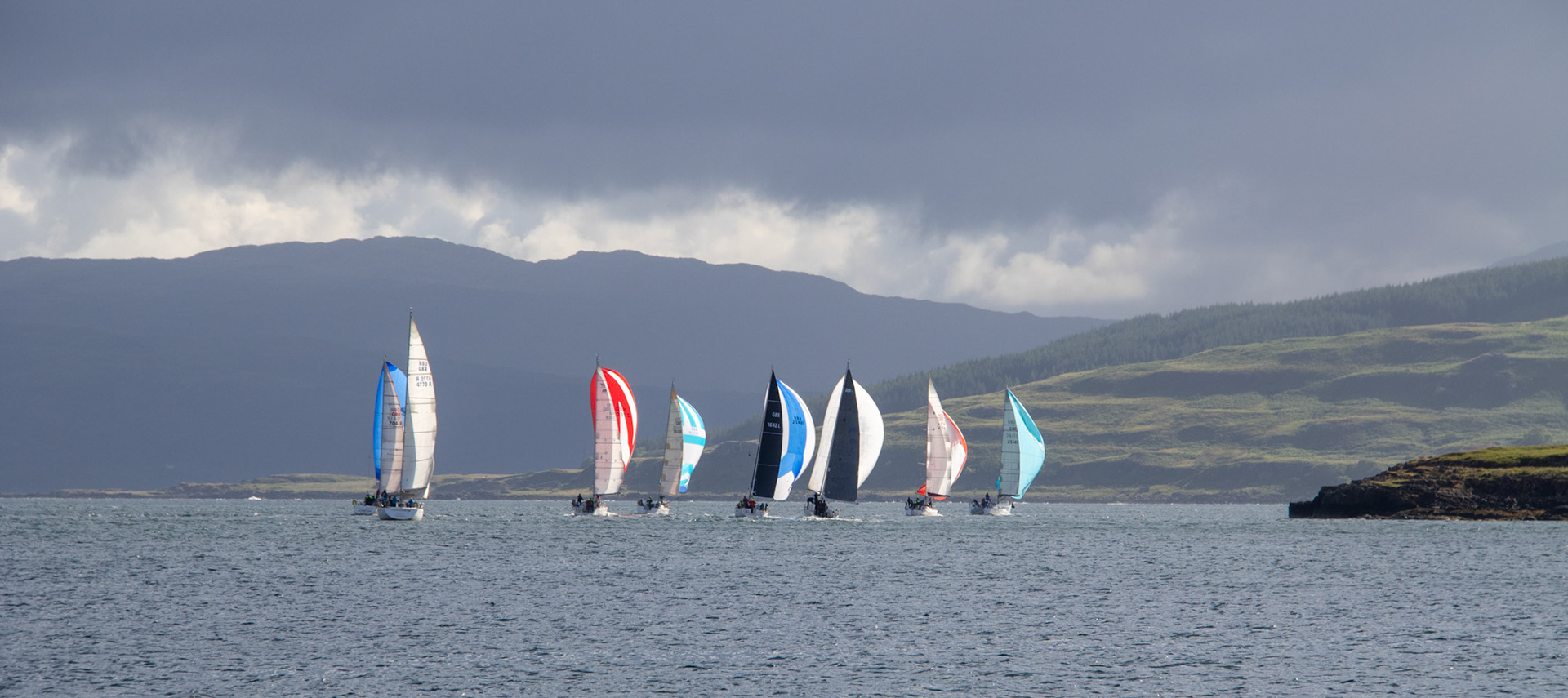
And they are off
Returning to Tobermory, we found ourselves caught up in a bit of a medical incident which meant a quick trip to A&E in Oban via Loch Aline. Then a dash down to Ardfern via the fast flowing Sound of Luing. (where we had started our adventure this year). Topping up with fuel and water we then headed South past the beautiful islands of Jura and Islay. Stopping in Craighouse for a night opposite the famous whisky distillery, we waited for the tides to carry us down to Islay. Jura has the largest area of metamorphic quartzite in the Highlands so it produces very poor soil but it does have an amazing coastline both to the east and the west. It was a rather rainy start but the winds were good and the skies cleared to give us a beautiful landscape to study on our way to Port Ellen on Islay. Here, we luckily found a space on the busy pontoon and enjoyed a calm night in this delightful village. A brisk walk to the rum distillery the next morning left us bereft as it was closed. However the local Spar shop luckily stocked some of the rum, and a bottle was purchased. It is the inaugural release for 2023 and it is a delightful peat spiced caramel scented rum. Quite moreish.
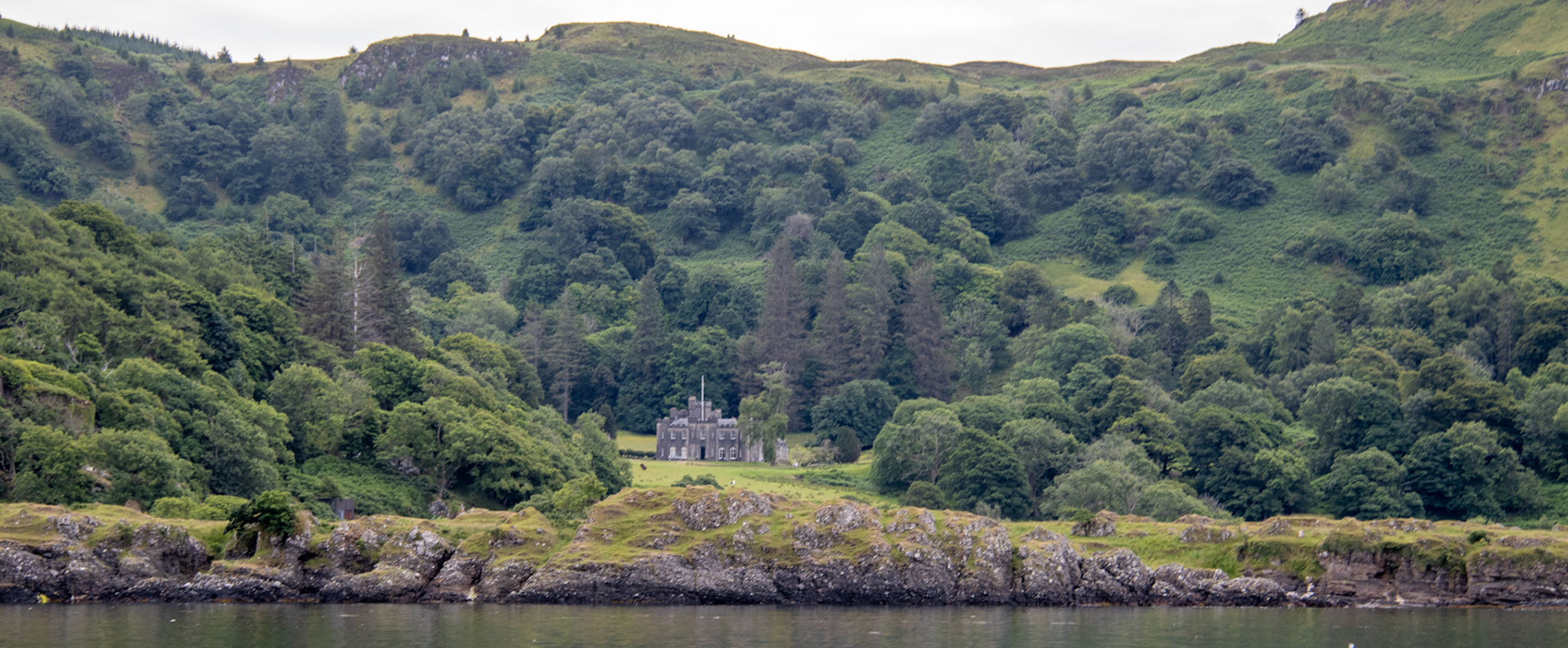
A room with a view protected by the hills south of Oban

Easdale from the west
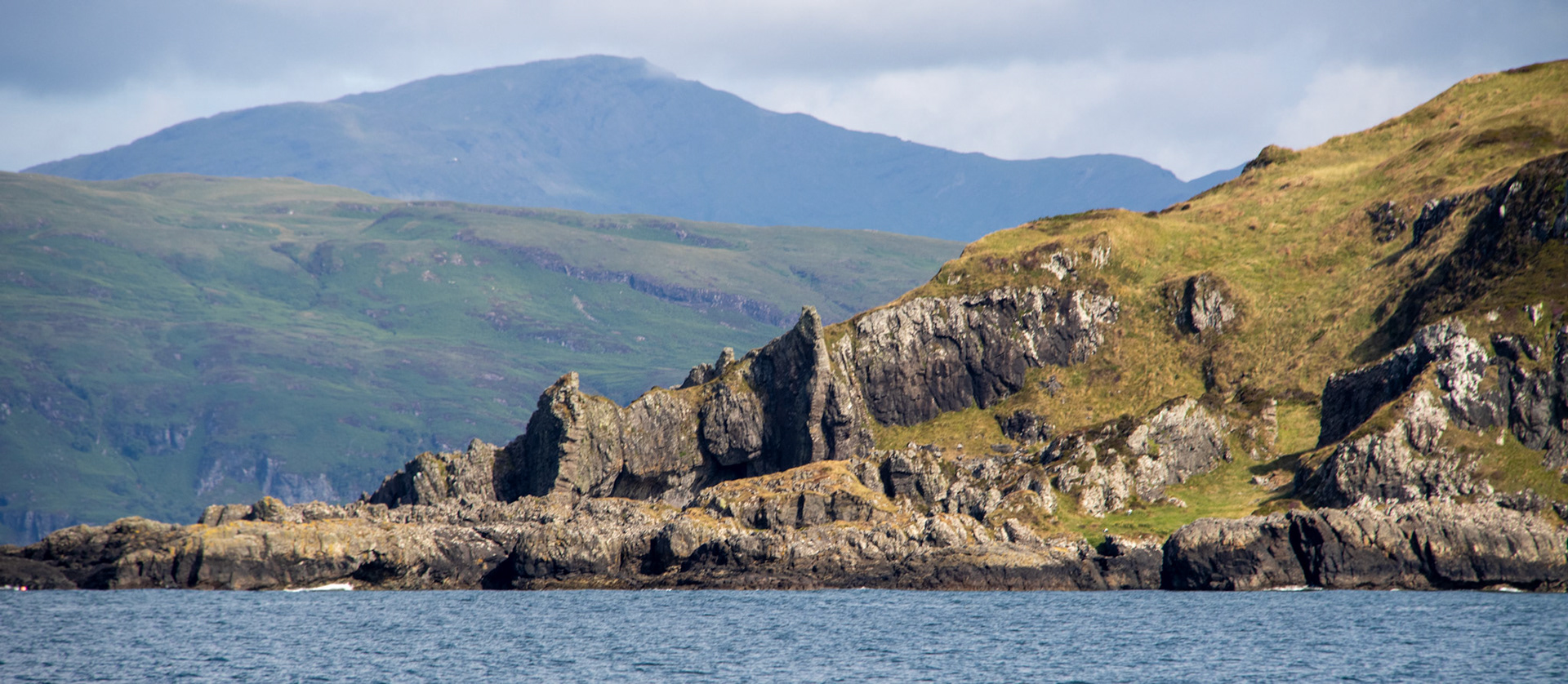

Fladda Lighthouse at the entrance to the Sound of Luing
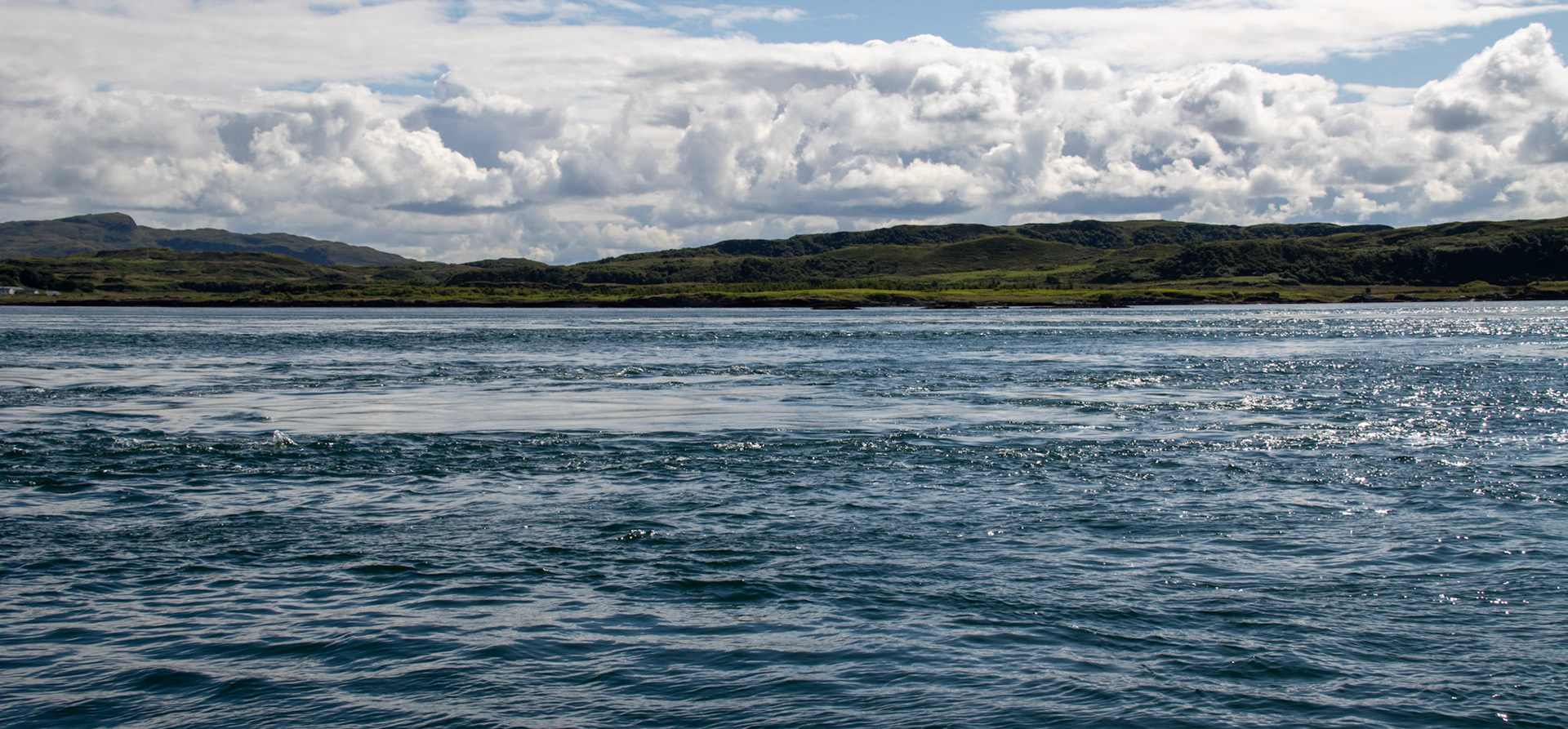
twirly whorly bits - spooky

Departing Craighouse - Jura
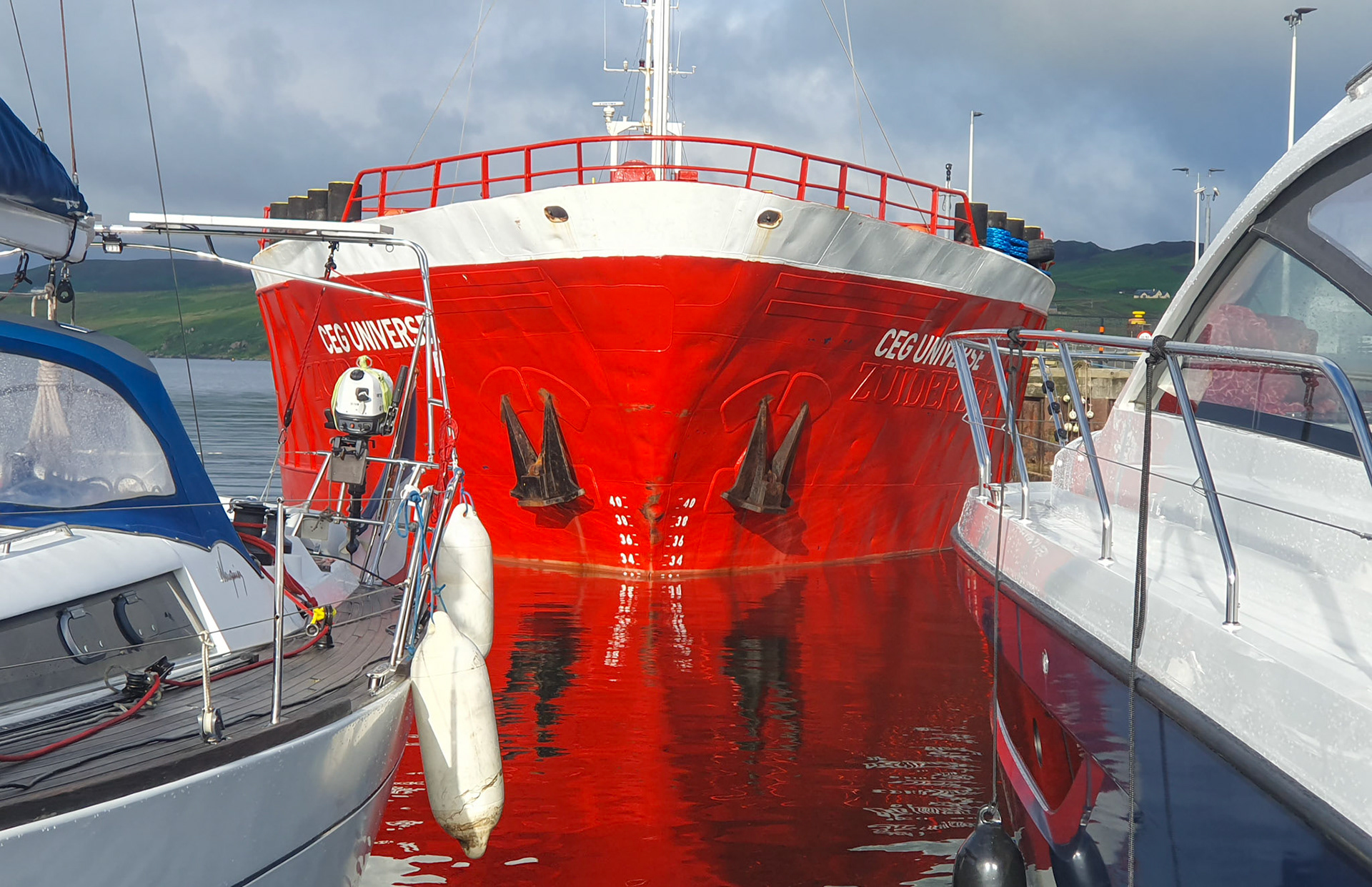
Room for another?
We were on a bit of a mission south now so that we could meet up with family and spend time ashore in Northern Ireland. Sadly leaving Port Ellen having not explored Jura and Islay as much as we would have liked we rolled across the notorious North Channel in relatively calm conditions with an uncomfortable beam sea and following wind. Leaving Rathlin to port we picked up the fast going east tidal stream and shot into Ballycastle Marina, a delightful and friendly marina in this pretty seaside holiday resort. With a stunning coastline and delightful rolling green hills it was a super place to spend 10 days with family.
We rented a super cottage in Bushmills to use as a base and to rest and recuperate from some of the more rigorous sailing we had encountered. Bushmills is home to the oldest licensed whiskey distillery in the world and produces some outstanding Irish Whiskey; it has been in existence for over 400 years. It also has a beautiful clear river, the River Bush with its source originating in the Antrim Hills. In the town is a small salmon leap which we watched with hawk eyes to spot any of the returning salmon! This river is managed as a premier salmon river and I discovered the fascinating lifecycle of the Salmon. It begins its life in the clear gravel beds and shallows of the river as eggs then fry. The small fry (?!) stay in the river until they mature into par and then they become smolts which is when they take on the colouring of the adult salmon. In May or June the smolts travel down river and begin an epic journey to their feeding grounds in the North Atlantic. Feeding on capelin, herring and sand eel gives the salmon flesh its distinct pink colour and within a year the smolts mature into grilse and return to their own river to spawn the next generation. The magic of migration.
We walked for miles along this beautiful coastline, when the weather permitted and of course visited the Giants Causeway. I’m not sure what I expected to see here but was completely overawed by the timelessness and stark beauty of the stunning columnar cliffs and black basalt rock formations. There is so much history to relate about this place but it was the legend of the building of the giants causeway by the giant Finn who was desperate to see his lady in Scotland that I loved most.
A quick trip home to Hordle, saw us return to the marina in Ballycastle on 4th August to meet up with friends who were sailing around the Irish Coast. They had experienced some tricky weather but had found the West Coast of Ireland stunning and the people friendly and welcoming. An added bonus was the soft gentle and frequent rain coming in from the Atlantic kept their boat beautifully clean! Probably a trip for us another year!

upside down western lighthouse on rathlin
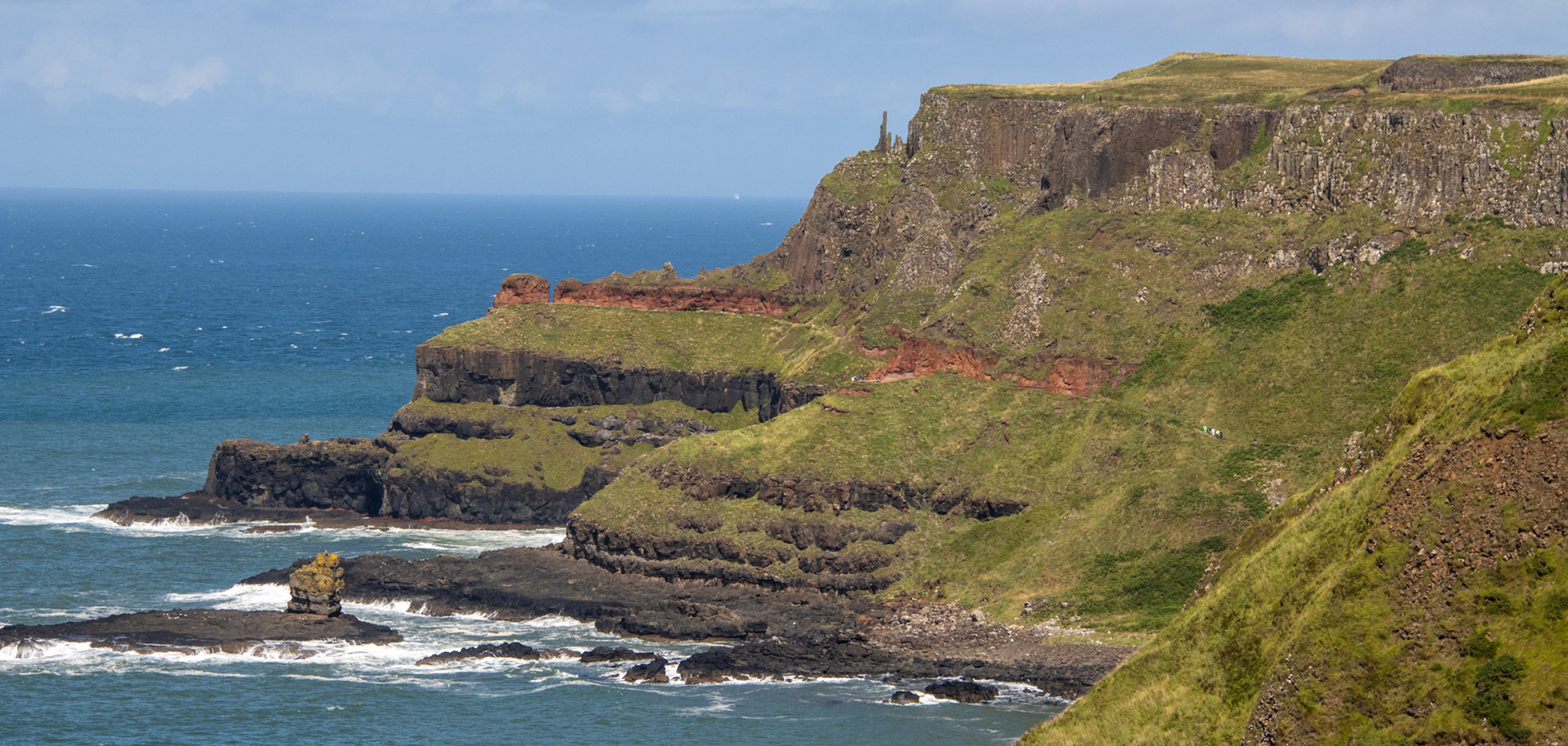
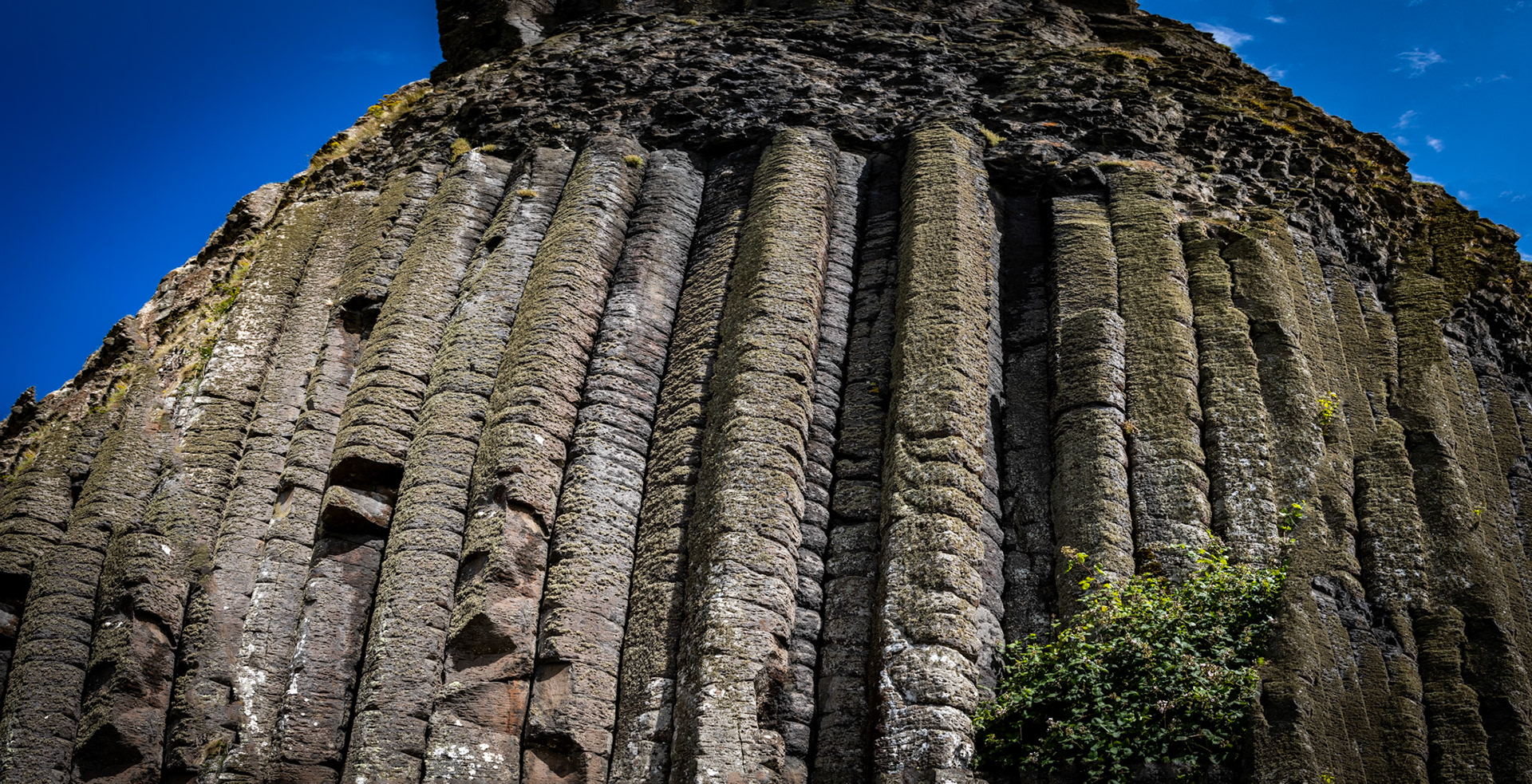
awesome
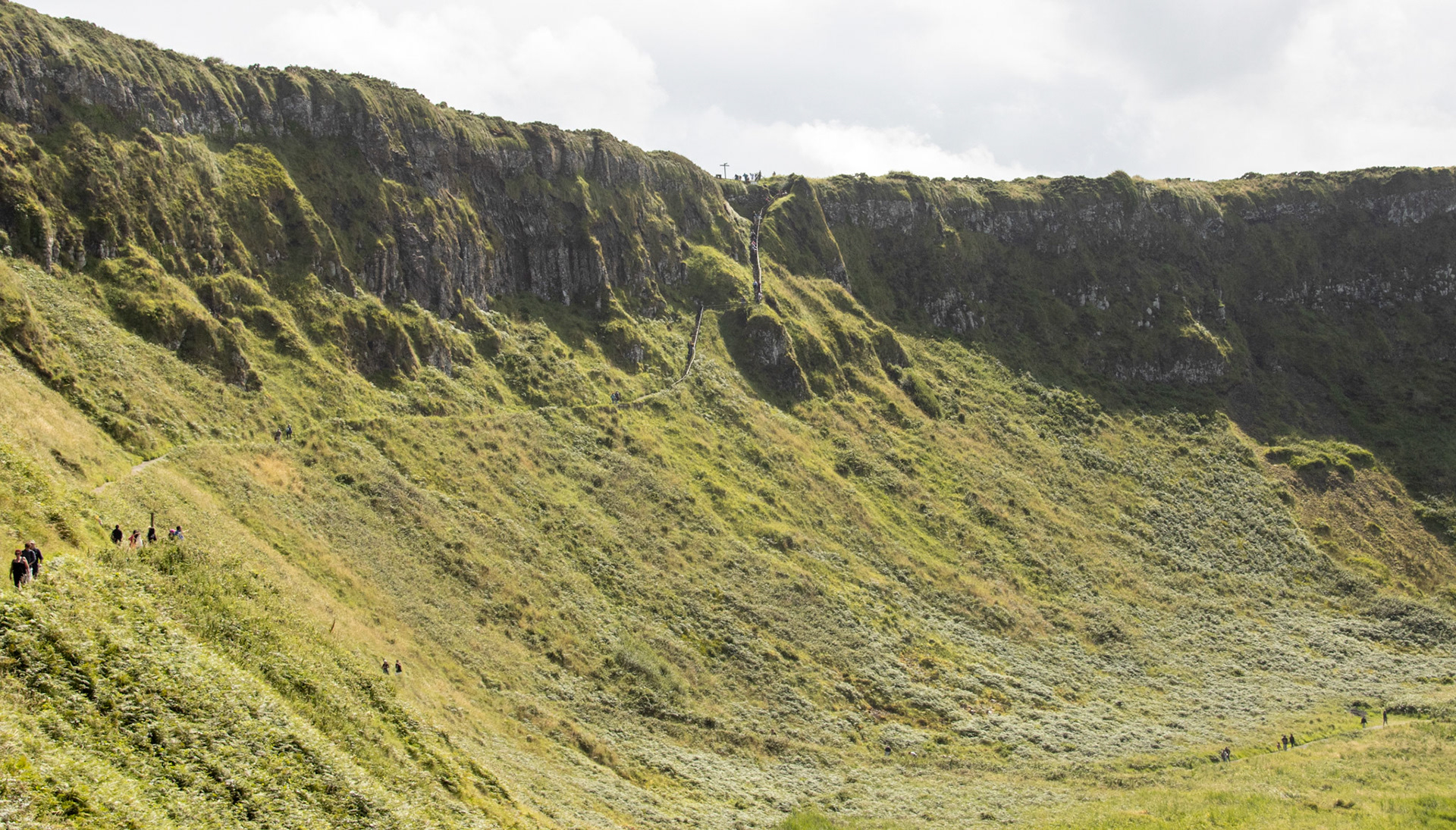
path around the Giants Causeway
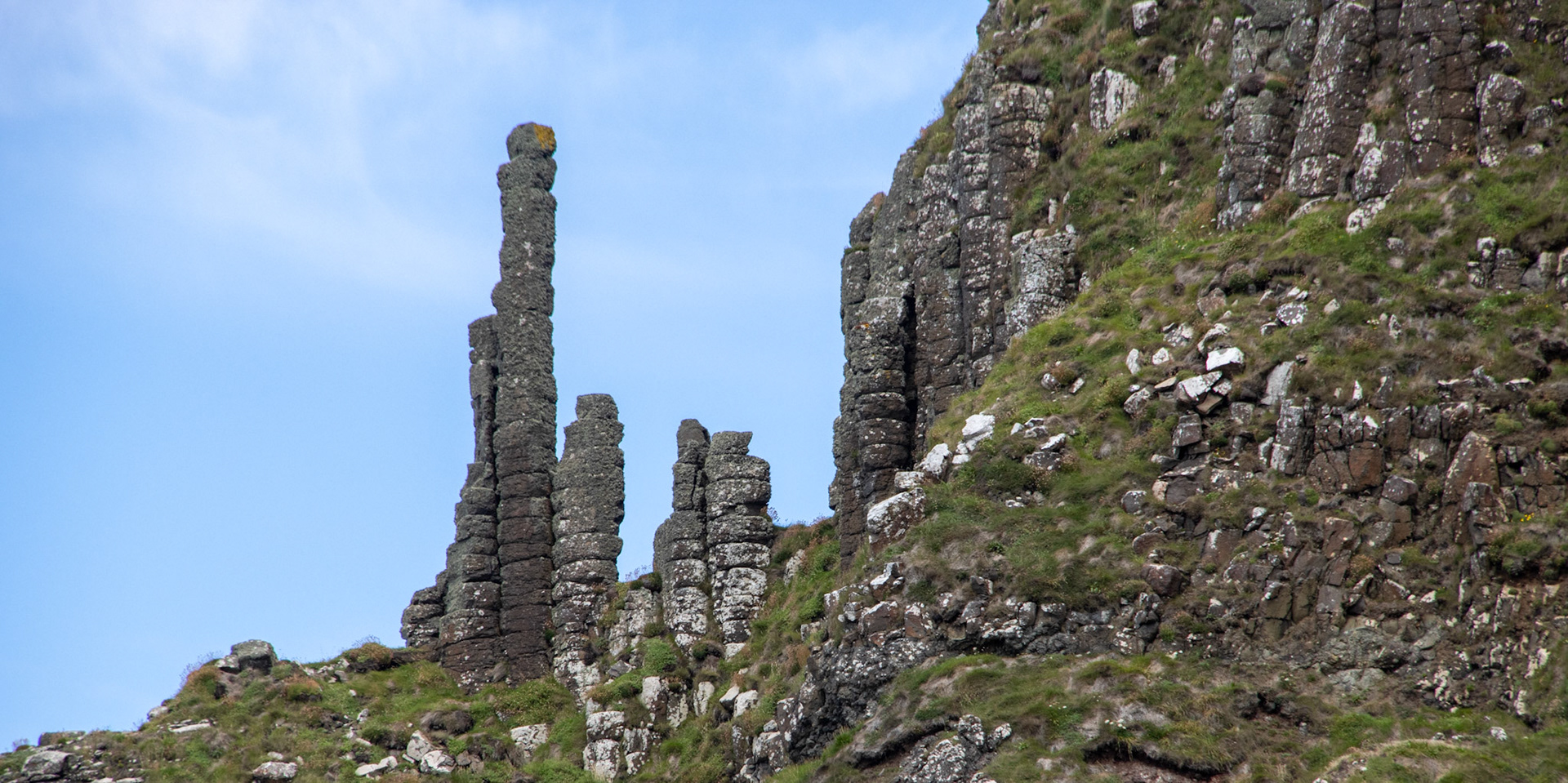
stand alone "organ pipes" of super cooled basalt

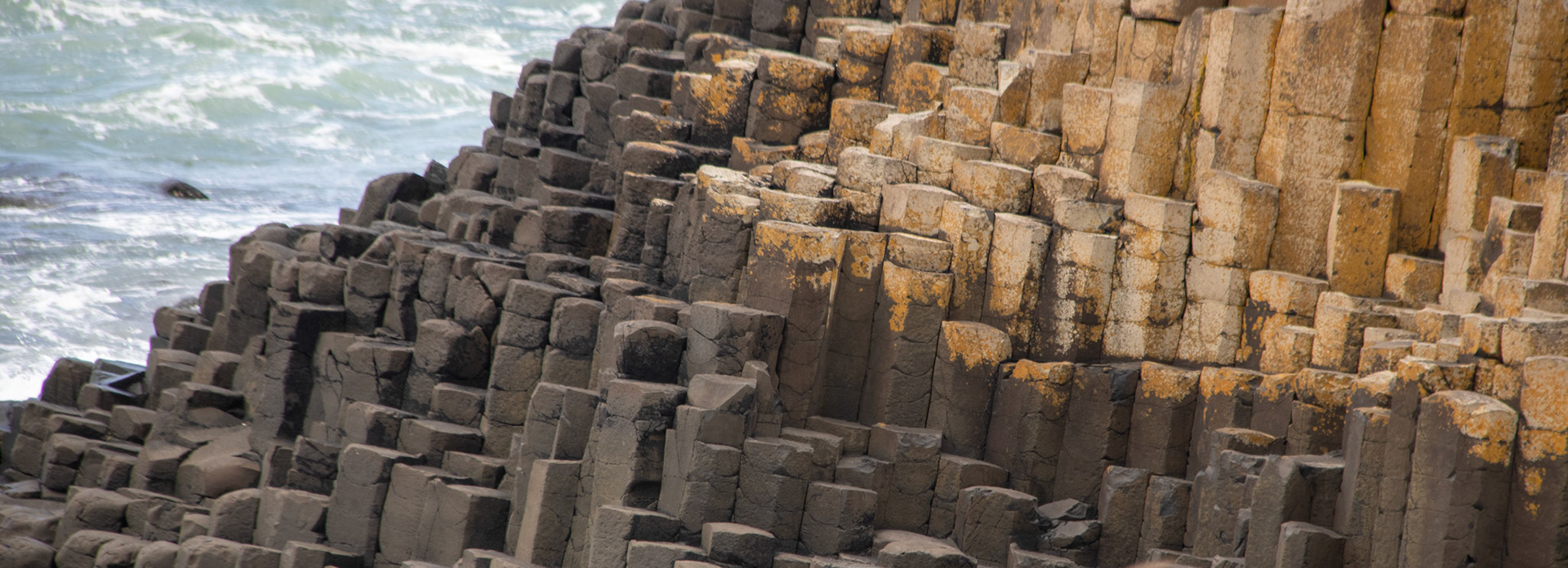
the giants caseway
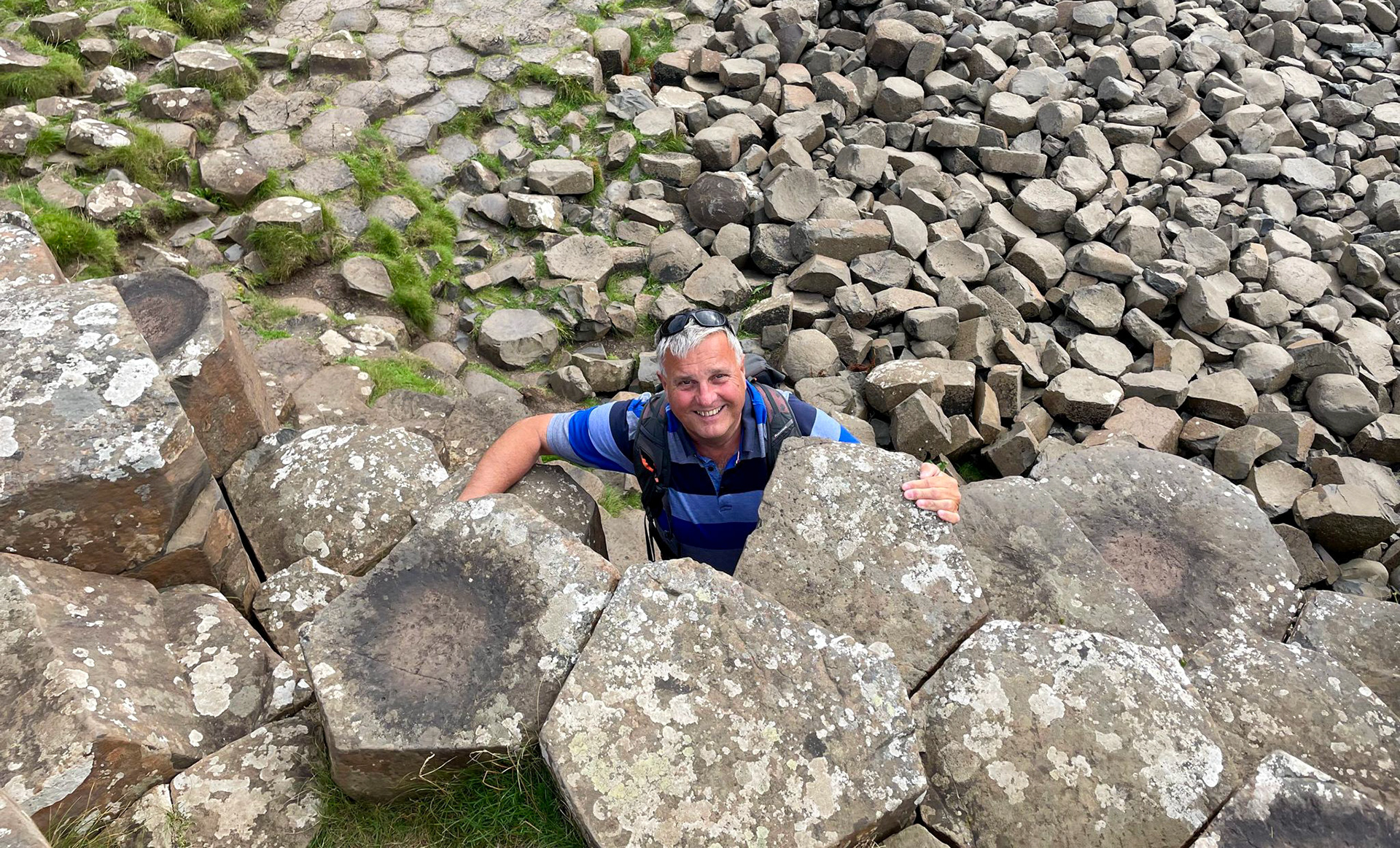
scrambler nick

fairhead
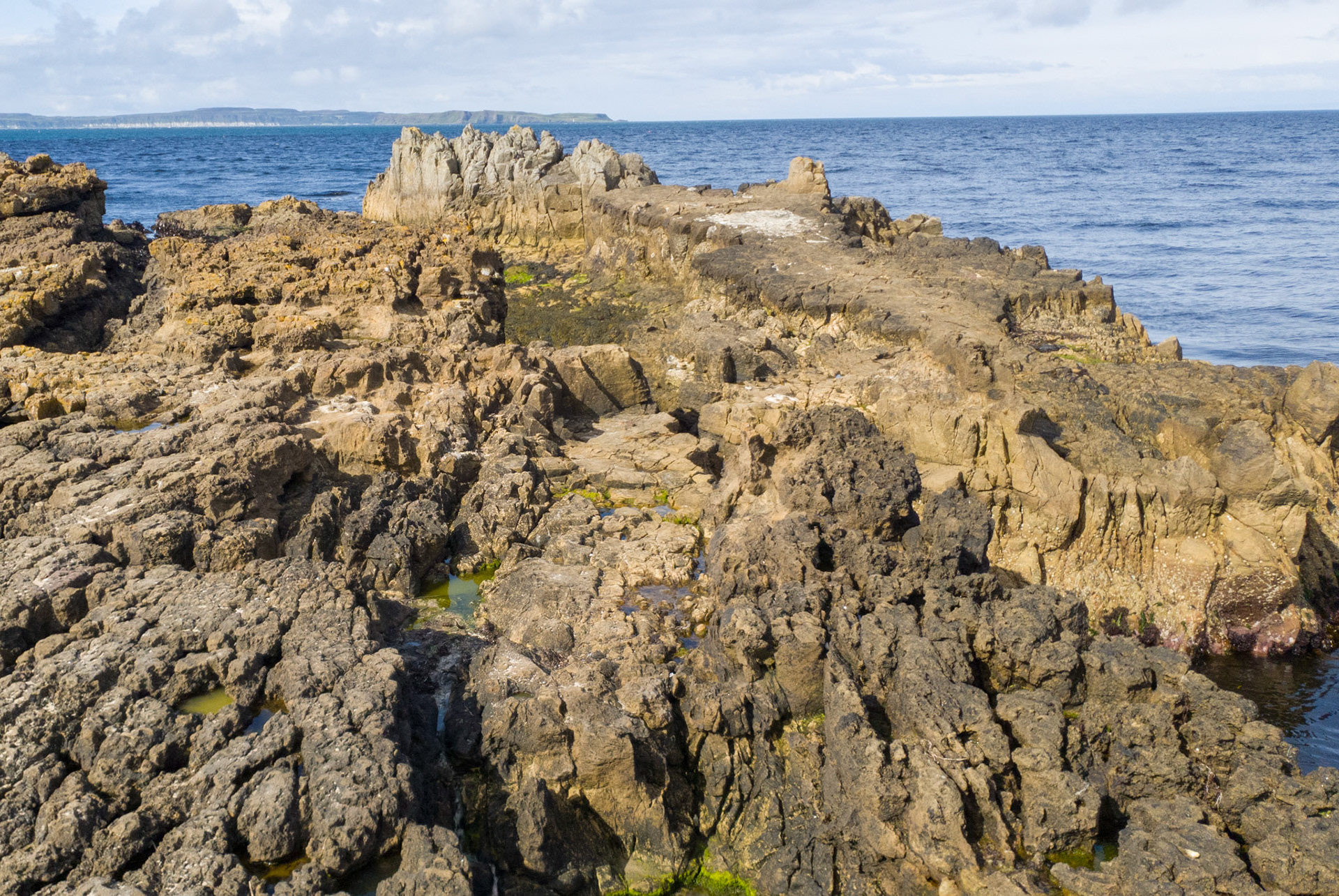
pans rock ballycastle
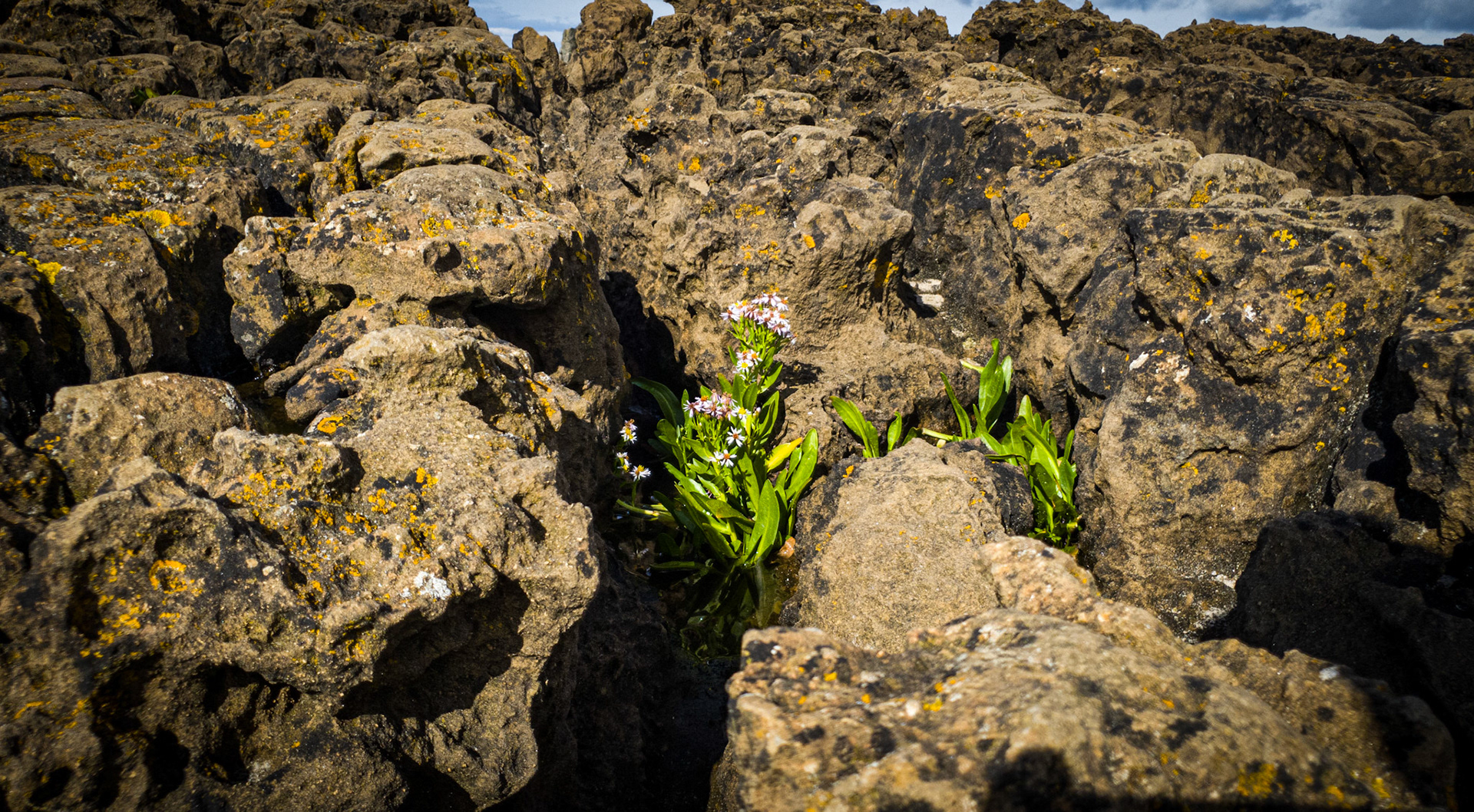
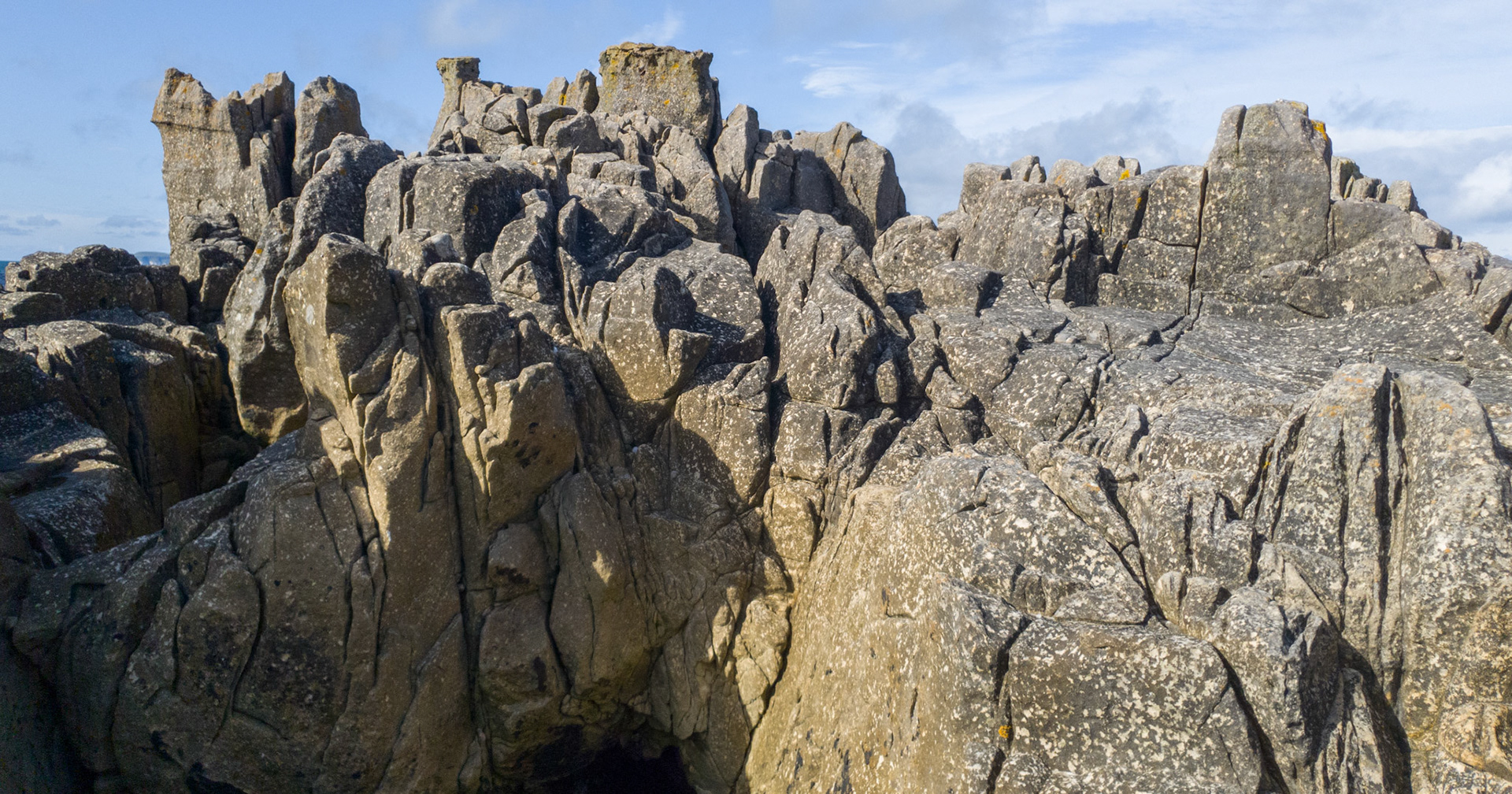
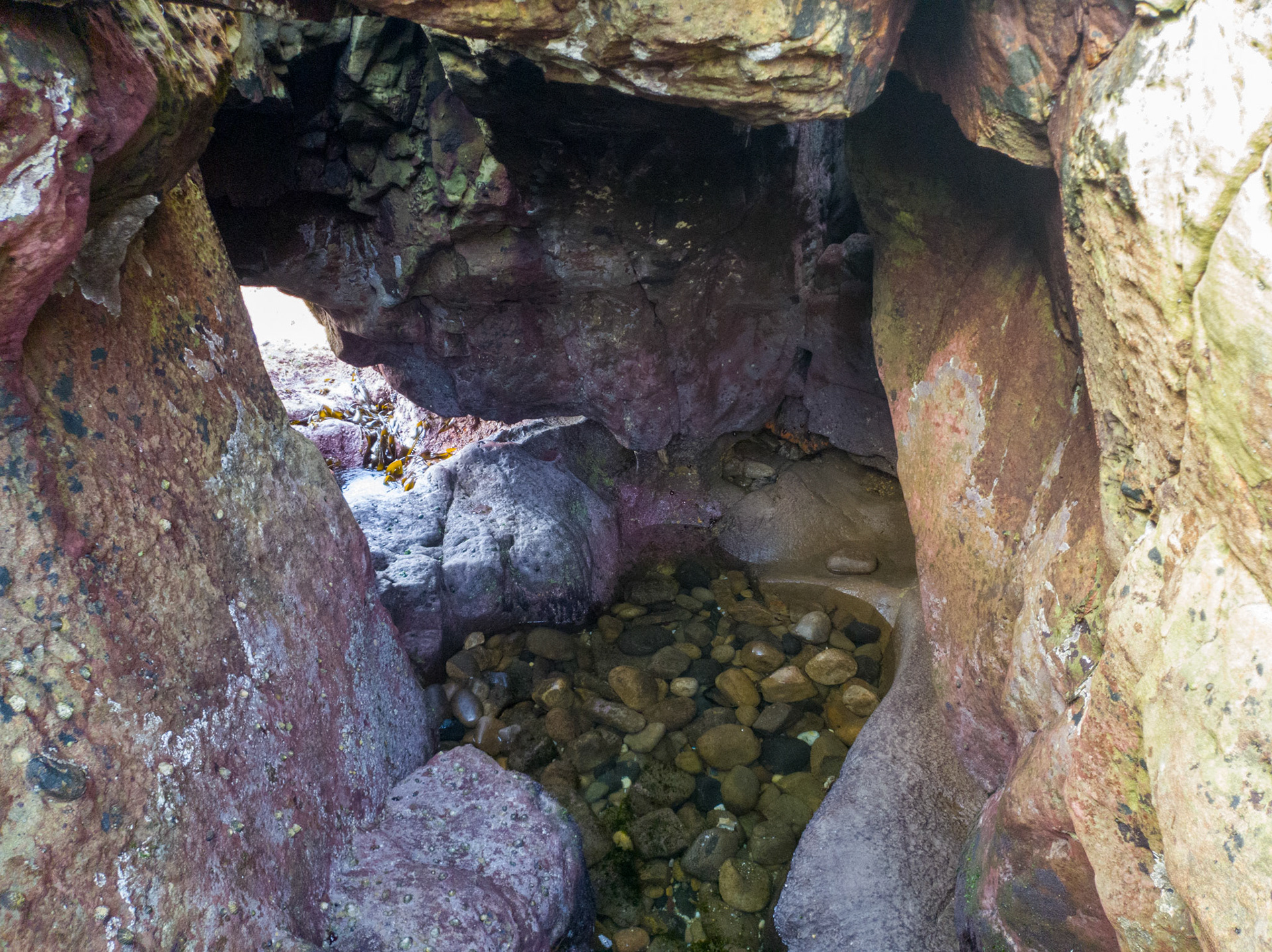
secret water flows to pans rock
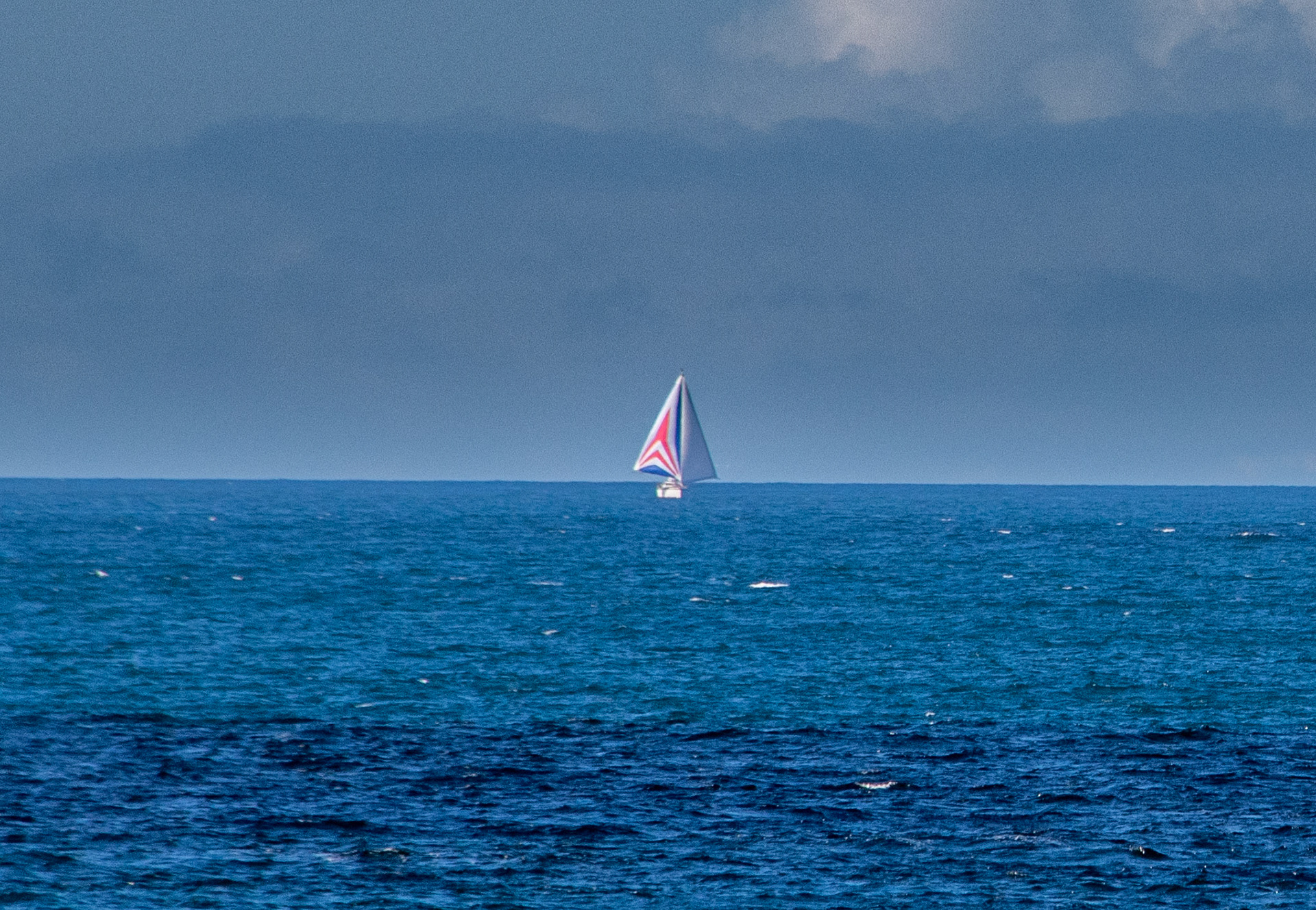
francis louise v coming into Ballycastle
